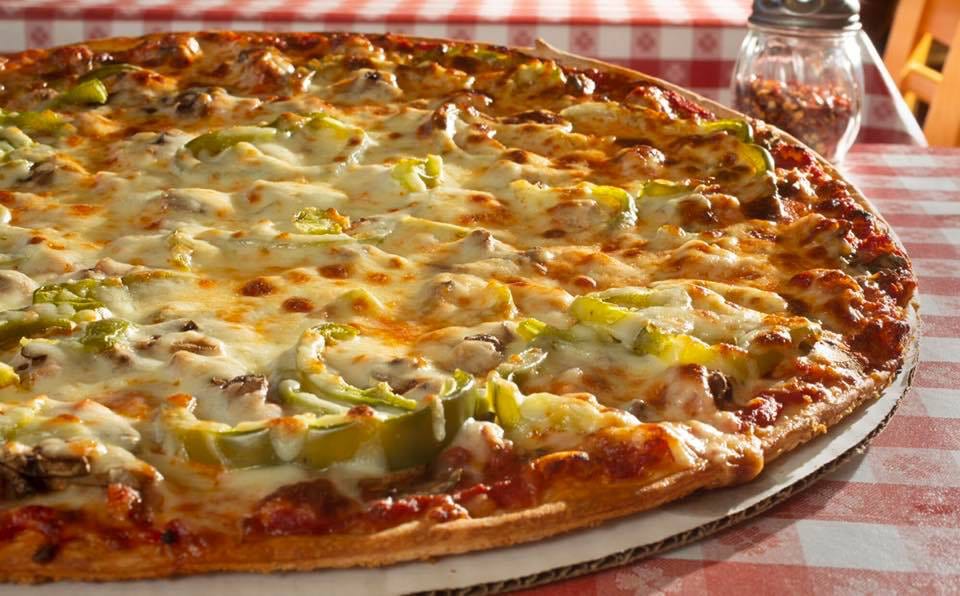Different pizza crust varieties play a factor in determining the taste, texture, thickness, and toppings of a pizza and the recipe used to produce it. Crusts impact prep, baking, look, and presentation; thus, they’re often a driving force behind pizza innovation.
So, what makes thin and thick crust pizzas so popular? What makes them so appealing? And where can you find the best pizza in Indiana?
Styles of Thin and Thick Pizza Crust
Thin Crust
Thin crust pizza is known for its thin, stretched center and crunchy edges. They are the least capable of holding the weight of the several varieties of pizza crust, and most do better with fewer toppings—although that doesn’t limit options:
- California Pizza
In the 1970s, when chefs began to experiment with non-traditional toppings, California pizza sparked the gourmet pizza obsession. Flaky thin crusts in single-serve or customary proportions are still available, topped with whatever your imagination allows—eggs, artichokes, goat cheese, mustard, paté—the sky’s the limit.
- Neapolitan Pizza
According to popular opinion, the first pizza was created in Naples, Italy, probably in the 1800s. Because of its long history, Neapolitan pizza is known as the “original” Italian pizza.
Neapolitan pizza must adhere to strict guidelines to obtain its trademark light, slightly crunchy texture. Hand-kneaded dough with a diameter of no more than 35 centimeters and a thickness of one-third of a centimeter in the center is an authentic Neapolitan dough. It’s baked in a domed wood-fired oven.
- New York Style Pizza
New York-style pizza is undoubtedly the most identifiable of the several varieties of pizza dough, as it is often served by the slice in large, wide wedges.
The crust on a New York-style pizza is slightly crisp on the exterior but thin and flexible inside, allowing large slices to be folded in half for utensil-free eating. High-gluten bread flour and minerals in New York City water give New York-style pizza crust its distinct flavor and texture (a not-so-secret ingredient that some out-of-state pizza makers actually “import” for authenticity).
- St. Louis Pizza
St. Louis pizza is notable for its round, thin, unleavened, cracker-like crust, robust enough to withstand the cheddar-Swiss-provolone cheese mix and various other toppings. When serving St. Louis pizza, skip the wedges! According to tradition, pies should be tavern sliced into “party squares” or rectangles.
Thick Crust
There’s no doubting that thick crust pizza is filling. Hand-rolled or shaped crusts measuring at least 1/2″ thick—and frequently thicker—are made to suit deep dish baking pans. These tried-and-true thick crust pizza classics demonstrate that they can readily handle heavy sauce and toppings.
- Detroit Style Pizza
Here’s some interesting trivia: The first Detroit-style pizza was reputedly baked on a metal spare parts tray similar to those found on assembly lines—a fitting tribute to the Motor City.
Although there is no way of verifying that claim, Detroit-style pizza has some recognizable ties to the thick, rectangle-shaped Sicilian pizza that citizens of Sicily, Italy, proudly constructed in response to the Neapolitan thin crust.
The medium-well done, near-fried chewy texture of a well-oiled pan distinguishes the Detroit style from the other styles of pizza dough. When you consider the reverse stacking order (“toppings-cheese-sauce” versus “sauce-cheese-toppings”), it’s simple to see why Detroit-style pizza has become increasingly popular in recent years.
- Chicago Style Pizza
From the Windy City, a thick, iconic deep dish! There’s no doubt that this is a unique pizza crust with a ledge that allows for big toppings, cheese, and sauce ratio. To give the crust a crispy, sometimes buttery, fried appearance, the pies are baked in an oiled deep-dish pan.
Cornmeal, semolina, or food coloring are typically used to give Chicago stuffed pizza crust its signature yellow color and enhance its particular taste and texture.
- Greek Pizza
This delightful pan pizza with a thick, chewy crust and a practically deep-fried bottom has been adopted by many in the Eastern United States. Greek pizza is puffier and chewier than a thin crust but not quite as thick as the Chicago style compared to other pizza crust forms. Despite being labeled Greek pizza, toppings frequently stray from the traditional feta cheese, olives, and red onion. A tomato paste base with many oregano goes well with many toppings.
Conclusion
Finally, all kinds of pizza crusts are delectable. Which crust style you want for your pizza delivery in Indiana is up to you. While some people prefer a typical thin and crispy dough crust, others prefer a thicker pan-style crust that is malleable and soft in texture.
There’s nothing wrong with sampling a variety of pizzas over time; variety is the spice of life, and we should all learn to appreciate it!
Doreen’s Pizzeria is a pizza place in Dyer that offers pizza delivery in Indiana, carryout, dine-in, and catering. Place an order with us today and taste delicious pizza!


